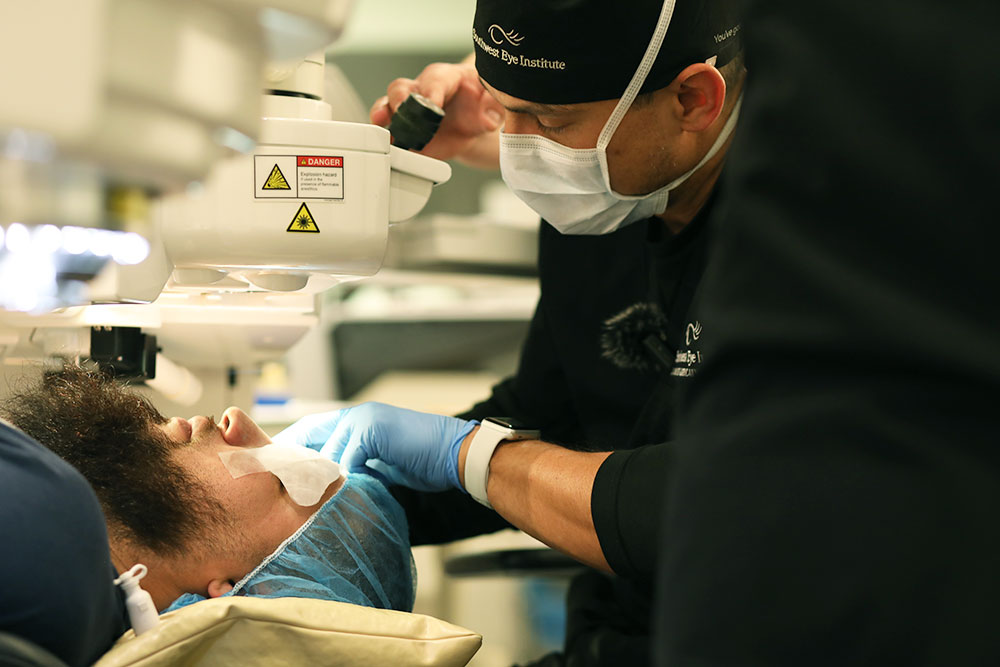If you’re preparing for PRK (Photorefractive Keratectomy) surgery or supporting someone who is, understanding the recovery process—and knowing what to expect after PRK—can make a big difference in easing anxiety and setting the right expectations. Unlike LASIK, PRK involves removing the cornea’s outer layer (the epithelium), which needs time to regenerate. Here’s what to expect after PRK surgery and that crucial first week of healing.
The First 24–48 Hours: The Toughest Stretch
Let’s be honest — the first few days after PRK can be rough. Most patients report the highest level of discomfort during this window. We prescribe eye drops that can alleviate the discomfort, but not completely eliminate it. The eyes may feel gritty, light-sensitive, watery, or just plain sore. This is completely normal and part of the healing process as the surface layer begins to regenerate.
The Bandage Contact Lens: Do Not Remove
To protect your healing eye, a bandage contact lens is placed at the end of your procedure. This lens must remain in place for the entire first week unless your doctor advises otherwise. It acts like a protective shield, keeping the healing cornea covered and more comfortable. Avoid touching, adjusting, or removing the lens — even if it feels slightly uncomfortable. If the contact lens falls, do not replace it yourself; contact your surgeon, and they’ll place a new one for you.
Blurry Vision After the Pain Fades? That’s Normal
Once the discomfort begins to ease (usually after the first 48 hours), many patients are surprised that their vision is still quite blurry. This happens because you’re now seeing through a brand-new epithelial layer, which can initially be hazy. Don’t worry — this is a normal phase of healing. Clear, sharp vision will come gradually over the next several weeks.
Your Best Friends: Antibiotic and Steroid Drops
During the first week, consistent use of prescribed antibiotics and steroid eye drops is critical. These medications help prevent infection, reduce inflammation, and lower the risk of scarring — all essential for a smooth recovery and optimal visual outcome. Stick to your dosing schedule and don’t skip doses, even if your eyes start feeling better.
Final Thoughts: Be Patient with the Process
PRK recovery isn’t instant, but it is worth it. That first week may test your patience, but the long-term visual improvement makes it all worthwhile. Keep your follow-up appointments, follow your doctor’s instructions closely, and be gentle with yourself during the healing phase. Your eyes are doing a lot of work behind the scenes!
Reviewed by Javier De la Torre

